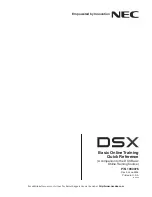
Hello and thank you for using the Macropod Variable Bandwidth VCF for Eurorack modular. We hope you
will find its tones most pleasing!
Technical Specifications (Eurorack standard)
Width: 10hp
Depth: 25mm
Peak Current Draw: 52mA @ +12V, 54mA @ -12V
1. Connecting your Macropod
Connect a power cable to the pin header at the top of the Macropod pcb. The -12V side of the connector
must be aligned with the silkscreen stripe indicator for proper use. This module is reverse diode
protected, but it is still not recommended that you plug it in backwards to see what happens.
2. Theory of Operation
Macropod signal routing, simplified
This module uses the AS3350 Dual VCF chip, a reissue of the CEM3350 designed by Doug Curtis and
used in a few 80s synthesizers. This is our second design using this IC, coming after the Marsupial Dual
VCF for Eurorack. While that design highlights the chip’s rich sound and resonant characteristics, the
Macropod leverages its versatility to create a space-friendly and highly-functional Variable Bandwidth
VCF with several features previously excluded from the two best-known filters of this type (the Serge
VCF2 and Buchla 291): Resonance control, onboard Notch output, and a “squared-off” distorted output.
In this design, a two-channel audio mixer sums Audio In A and Audio In B and routes the mix to half of the
chip, which is configured in High Pass/Band Pass mode. These two outputs are directly accessible. The
High Pass output is then routed to the input of the chip’s other half, configured as a Low Pass/Band Pass
filter. This filter’s Low Pass output creates our Variable Bandwidth A output via the master Bandwidth





















